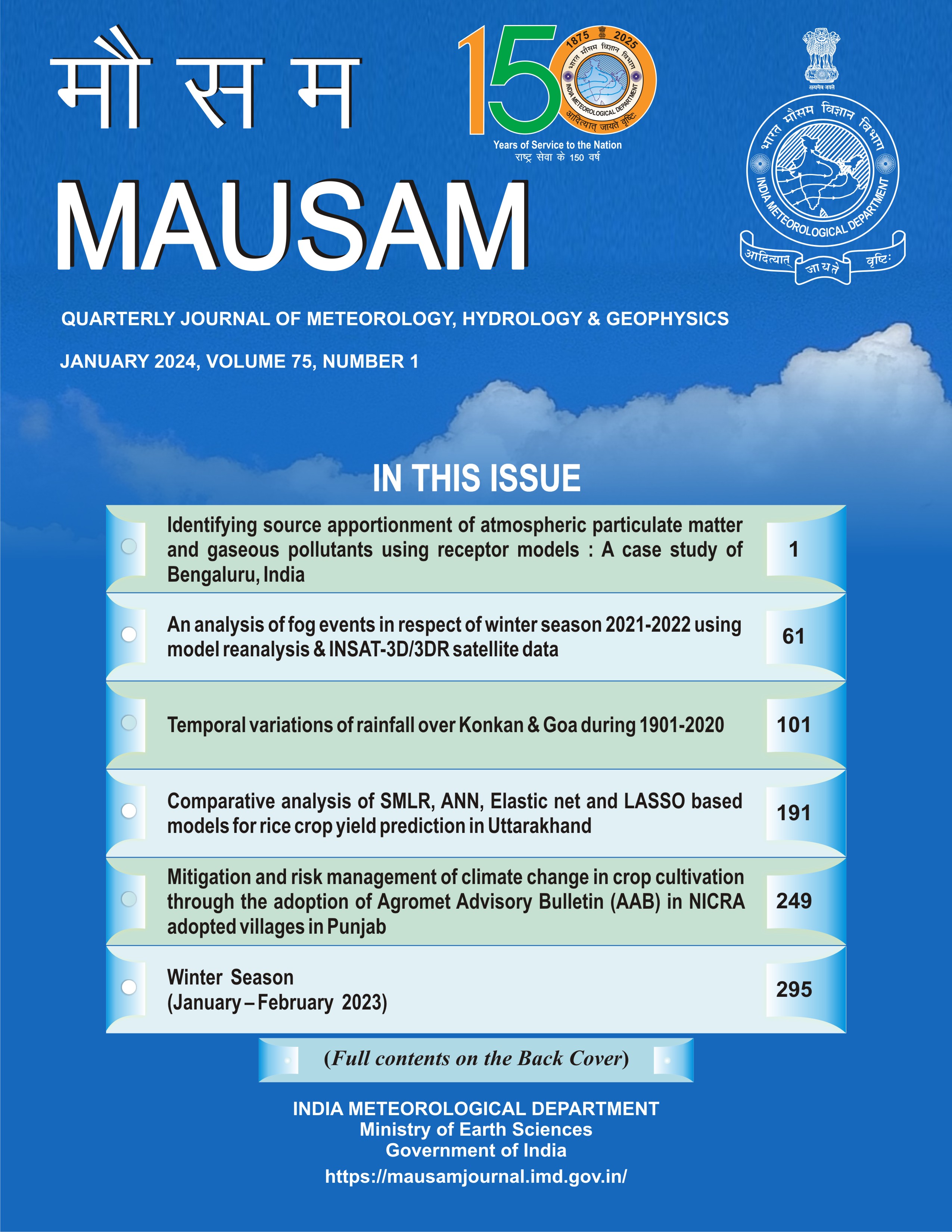Future projections of precipitation and temperature extremes at Sohra (Cherrapunji) using Statistical Downscaling Model
DOI:
https://doi.org/10.54302/mausam.v75i1.6081Keywords:
SDSM, Precipitation, Temperature, Cherrapunji, Future Projection, CanESM2.Abstract
The Statistical Downscaling Model (SDSM 4.2) is used to project the future precipitation and maximum and minimum temperatures at Sohra, one of the extreme places on earth, using the predictors of the Second-Generation Canadian Earth System Model (CanESM2). The SDSM was calibrated with daily precipitation and temperature data from 1979 to 2005 and validated from 2006 to 2020. Future scenarios generated under the three Representative Concentration Pathways (RCP) 2.6, 4.5 and 8.5 are divided into three future periods, Near Future (2021-2040), Mid Future (2041-2071), and Far Future (2071-2100). It is found that the precipitation and maximum/minimum temperature at Sohra are influenced mainly by the major global predictors; specific humidity at 850 hPa height (s850) and mean temperature at 2 m (temp)/near surface specific humidity (shum), respectively. The downscaled result reveals an increase in Monsoon precipitation in the range of 266-1543 mm under various RCPs compared with the base periods 1985-2005 during the Near Future and 1979-2008 during the Mid and Far Future. Also, annual maximum and minimum temperature increases in the range of 1-2.8 °C and 1.2-3.6 °C for all RCPs in the future.
Downloads
Published
How to Cite
Issue
Section
License
Copyright (c) 2023 MAUSAM

This work is licensed under a Creative Commons Attribution-NonCommercial 4.0 International License.
All articles published by MAUSAM are licensed under the Creative Commons Attribution 4.0 International License. This permits anyone.
Anyone is free:
- To Share - to copy, distribute and transmit the work
- To Remix - to adapt the work.
Under the following conditions:
- Share - copy and redistribute the material in any medium or format
- Adapt - remix, transform, and build upon the material for any purpose, even
commercially.



